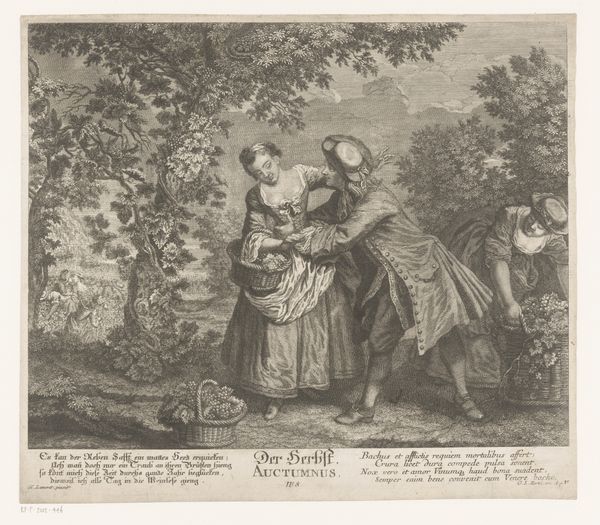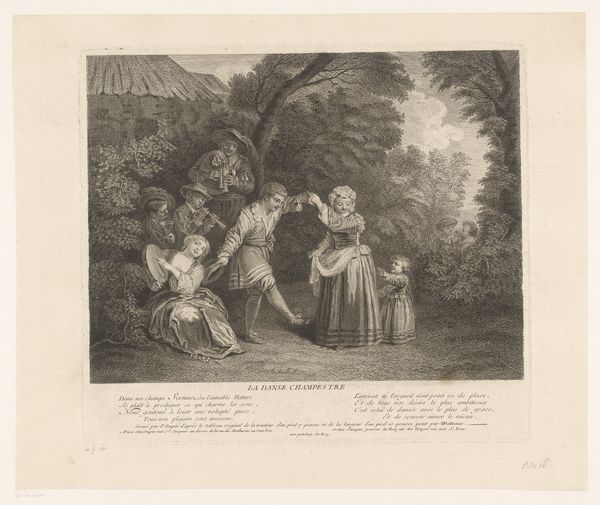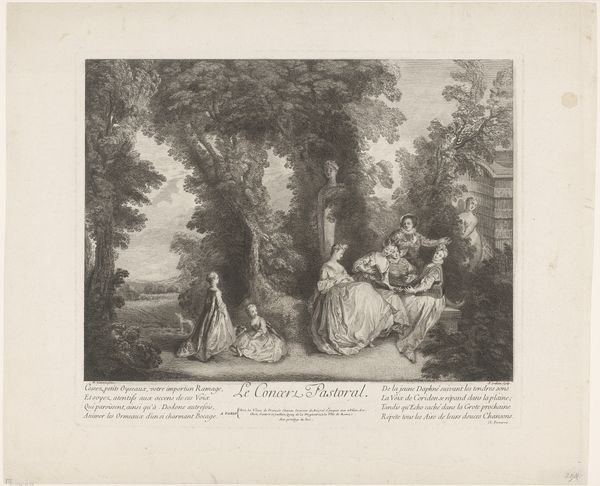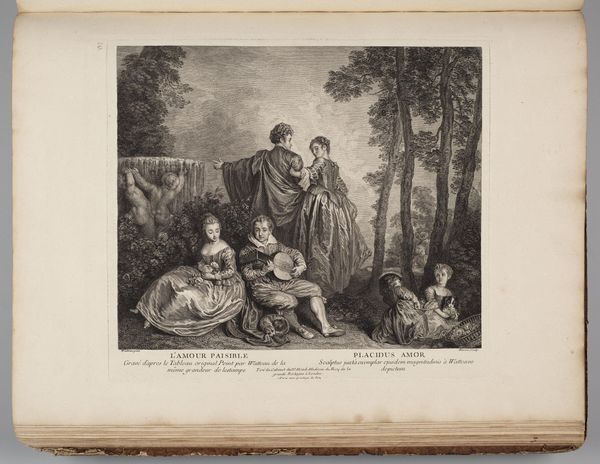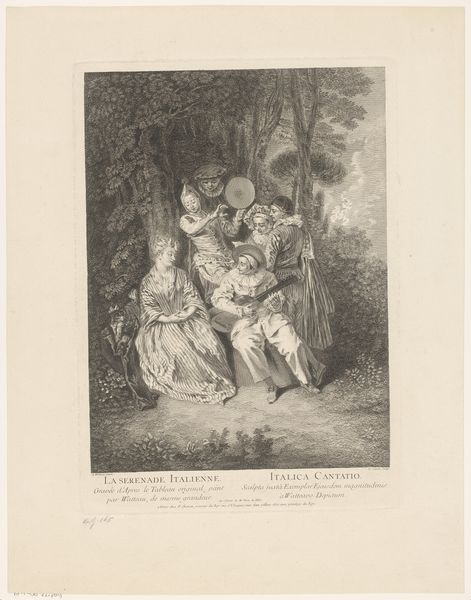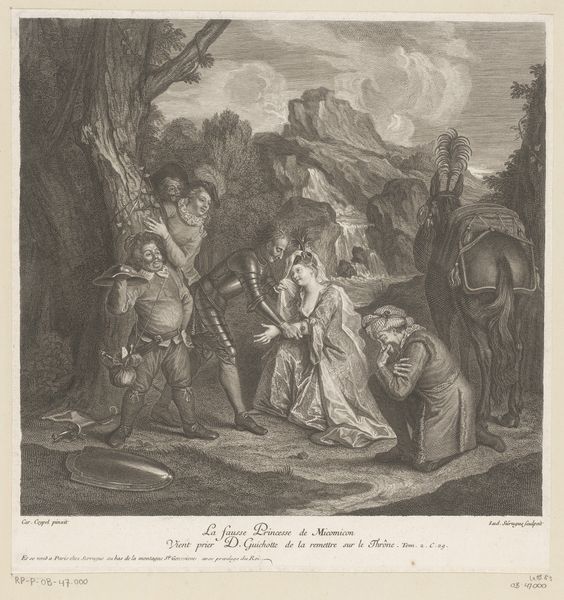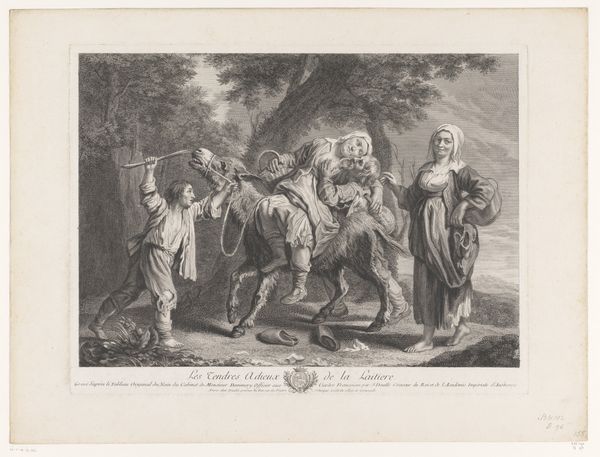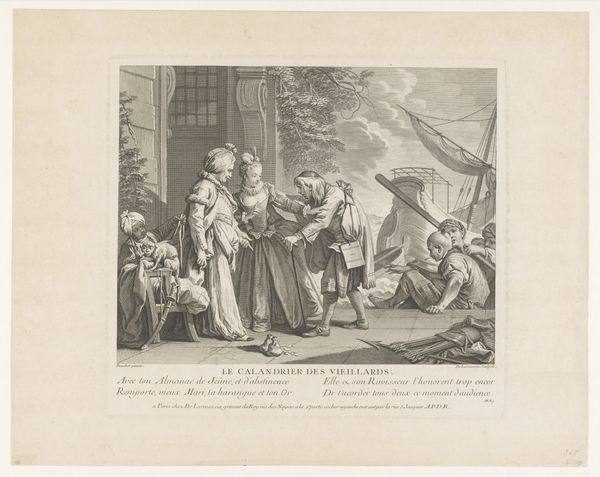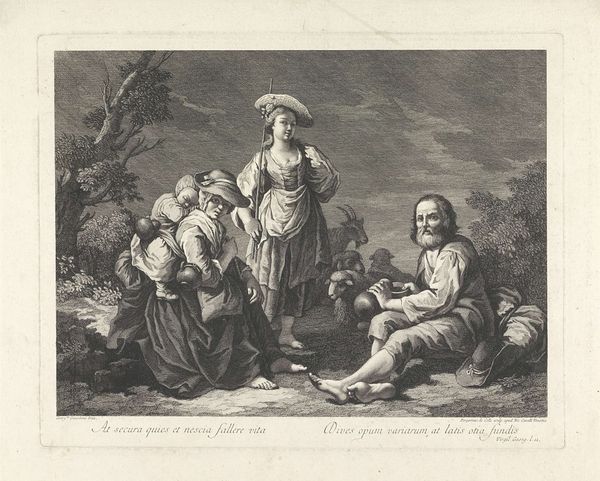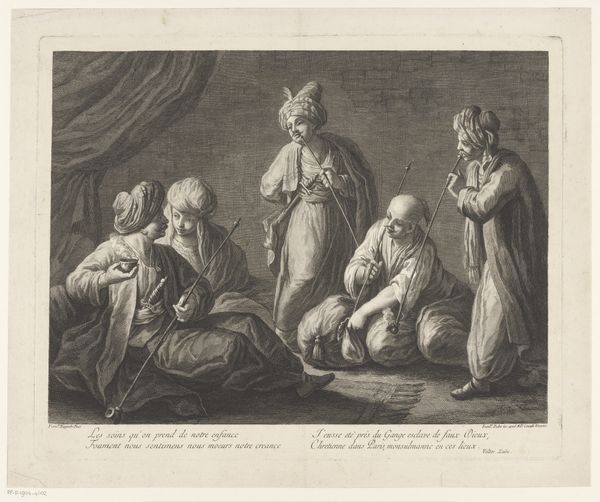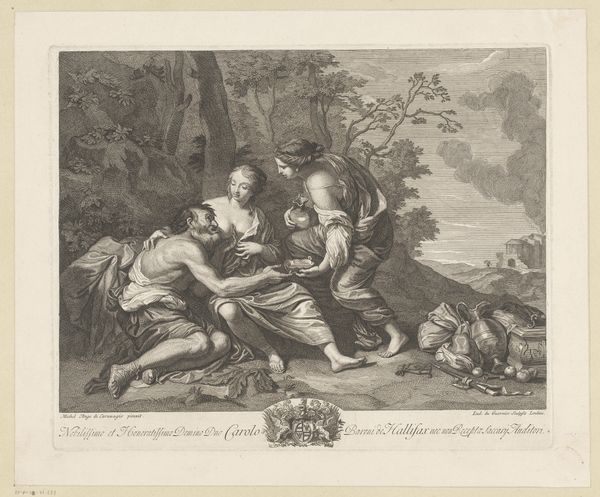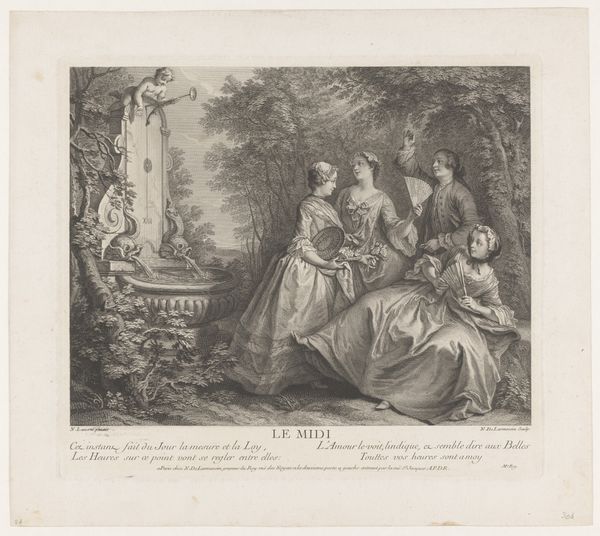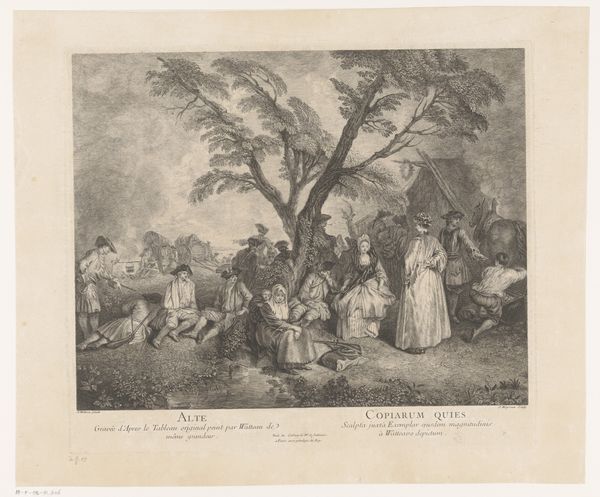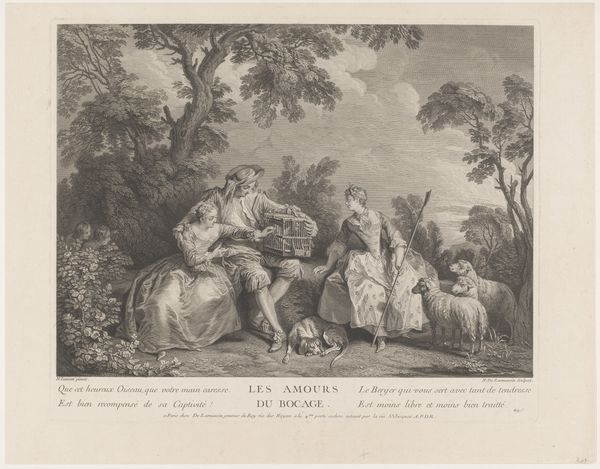
engraving
#
baroque
#
old engraving style
#
landscape
#
white palette
#
figuration
#
genre-painting
#
history-painting
#
engraving
Dimensions: height 336 mm, width 381 mm
Copyright: Rijks Museum: Open Domain
Nicolas de Larmessin III created ‘Herfst’ using engraving techniques; a process involving carving lines into a metal plate, inking it, and pressing it onto paper. Engraving was a meticulous craft, demanding precision and skill. The fine lines you see were achieved with specialized tools, like burins, to physically remove slivers of metal. The depth and density of these lines create the tonal variations and details in the print. The labor-intensive nature of engraving meant that prints were relatively expensive, often commissioned by or circulated among the upper classes. The scene depicted here, of what appears to be an aristocratic grape harvest, reflects this social context. The act of making the print mirrors the socio-economic world it represents, a world where skilled labor produces luxury items for a privileged audience. By understanding the material processes behind ‘Herfst,’ we gain insight into the cultural values and economic structures of the time, challenging any separation between art, craft, and social history.
Comments
No comments
Be the first to comment and join the conversation on the ultimate creative platform.
